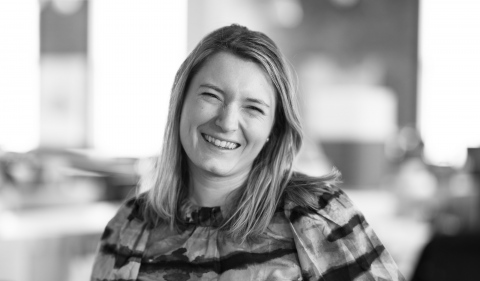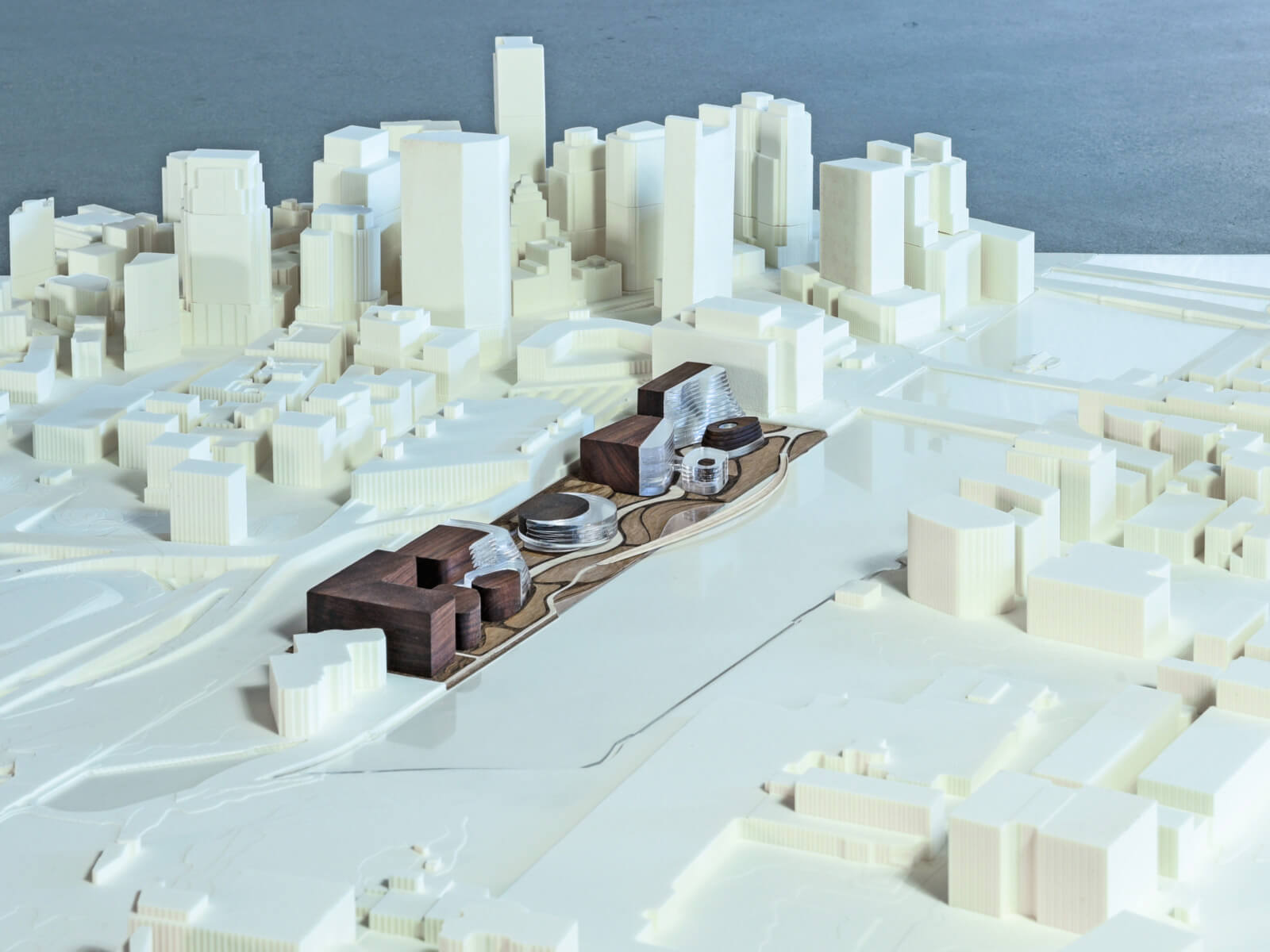This fall semester, PAYETTE is hosting ten Virginia Tech Architecture + Design students from the Center for Design Research OpenLab Studio at our office in Boston. The studio is being led by Kevin Sullivan, Robert Dunay, Nathan King, Denise Dea, Leon Drachman, Mark Scott and Laurie Booth.
The students recently reached a major milestone in the semester with the culmination of their master plan exercise. The students are working on an Innovation campus proposal located on 15 acres adjacent to the Fort Point channel in downtown Boston. The campus is composed of building typologies central to PAYETTE’s core areas of practice: research spaces, company headquarters, prototype spaces and start-up spaces.
I have a new perspective on how building placement and landscape design of the site can influence each other. This project challenged us to look at the different layers of information influencing the project such as transportation, environmental concerns, and the surrounding urban fabric.
Luisa Haller
The students began with analysis of their site through mapping and diagramming their research on topics including history and context, infrastructure and climate resiliency. After presenting their findings, the students grouped into three teams to design their master plan in a fast four-week timeline.
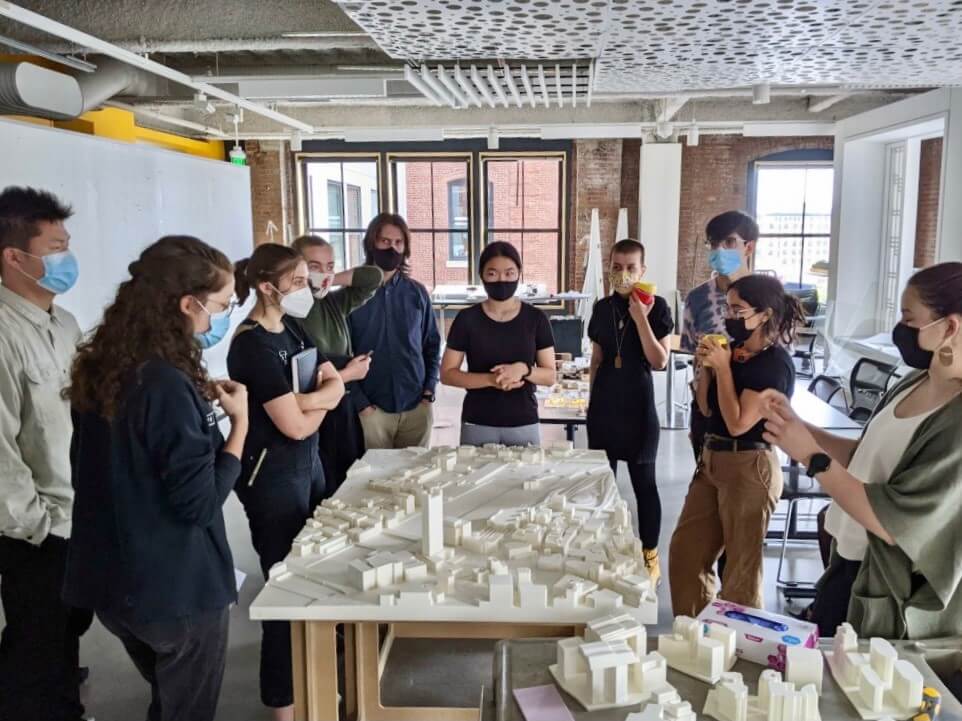
Mark Scott, Craig Mutter, Laurie Booth, Charlie Klee, Jeff DeGregorio, Ryan Murphy and Mark Oldham presented PAYETTE buildings as case studies to the complex program typologies. A site visit to Northeastern University’s ISEC, and EXP (currently in construction) projects served as lessons on site planning, landscape design, building massing and the research lab typology.
I initially found the whole master planning process to be a fairly intimidating process. We worked at a scale that I was not too familiar with, but it was a healthy discomfort to go through. Working with a group of my peers was an enriching experience. Not only did it teach me how to truly listen to other what other people think is the right move, but it also gave me the courage to take up space in a collaborative environment. Compromise is important, but it is important as young designers to learn how to articulate our designs.
Aidan Brown
The format of reviews mirrored PAYETTE’s own workflows: sketch session on Mural, informal desk crits, alcove conversations and more formal reviews. Members from the firm and faculty from Virginia Tech collaborated to offer feedback and knowledge sharing throughout the process.
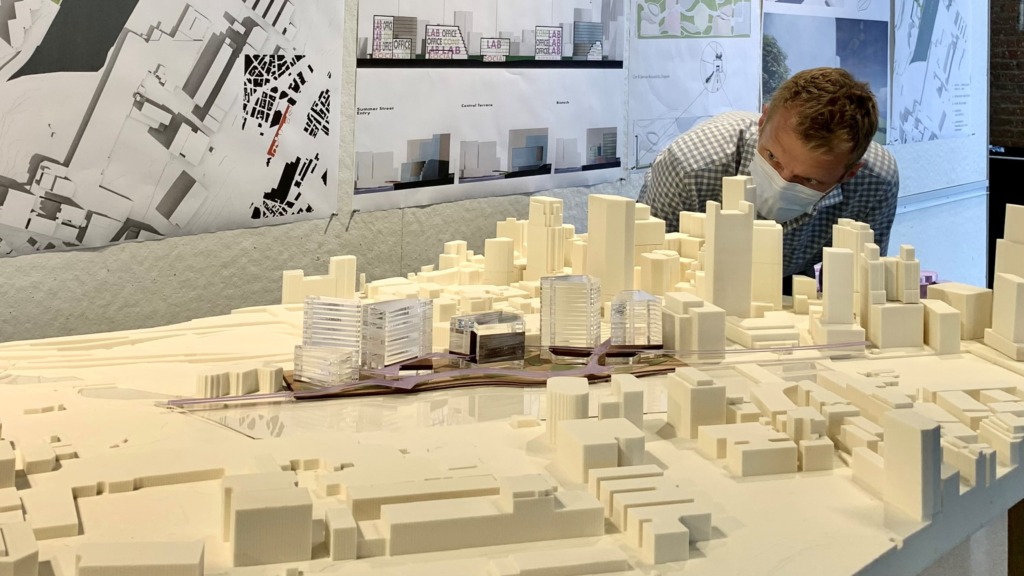
Working in tandem with the Fabrication course, the students used model making as their primary form of design communication. The students brought new life to our old-school hot wire foam cutter, ripping through sheets of insulation foam to rapidly test ideas. We delighted in coming into the office each morning to see the output generated from the previous night’s late-night design sessions. The teams translated their chunky foam models into precious models made from walnut and plexi glass.
Designing a master plan for our first project was challenging because of its need to be poetic and conceptual, but also respond to very real and complex challenges. Zooming out was hard. We also knew that eventually we would each be designing under the parameters that we drew. We had to think carefully and try to create a plan that gave us plenty of design freedom. I think this exercise was beneficial because it gave us a greater understanding of the intricacies of the site and appreciation for the parcels and massings before we started shaping them into architecture.
Samantha Grey
We challenged the students to think at a new scale with a completely new set of parameters and constraints. The work that resulted is exciting.
With a master plan established to set the stage, the students will begin the design of the individual parcels of the Nexus Innovation Campus.
The master plan project was a unique and challenging experience within our architectural education. Integrating our ideas and formulating a final product that was cohesive to the overall site presented several learning opportunities- The collaborative nature of the project introduced us to innovative ways of thinking, and producing.
Dorsa Naimi
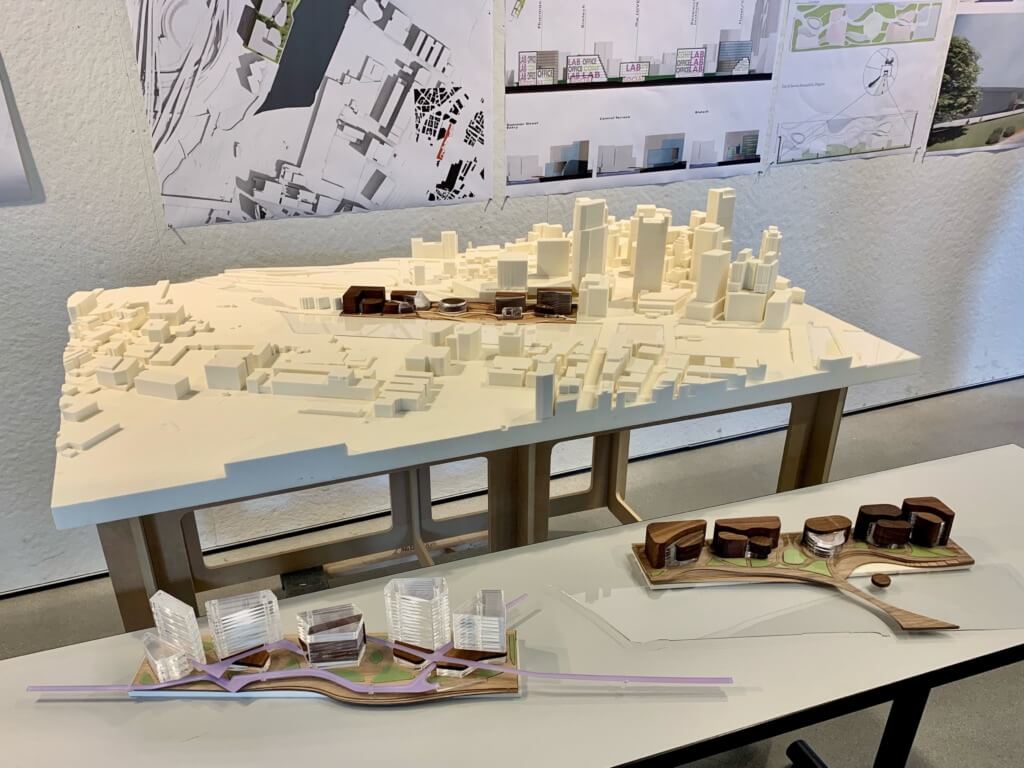
You can read more about the semester with these previous blog posts:

